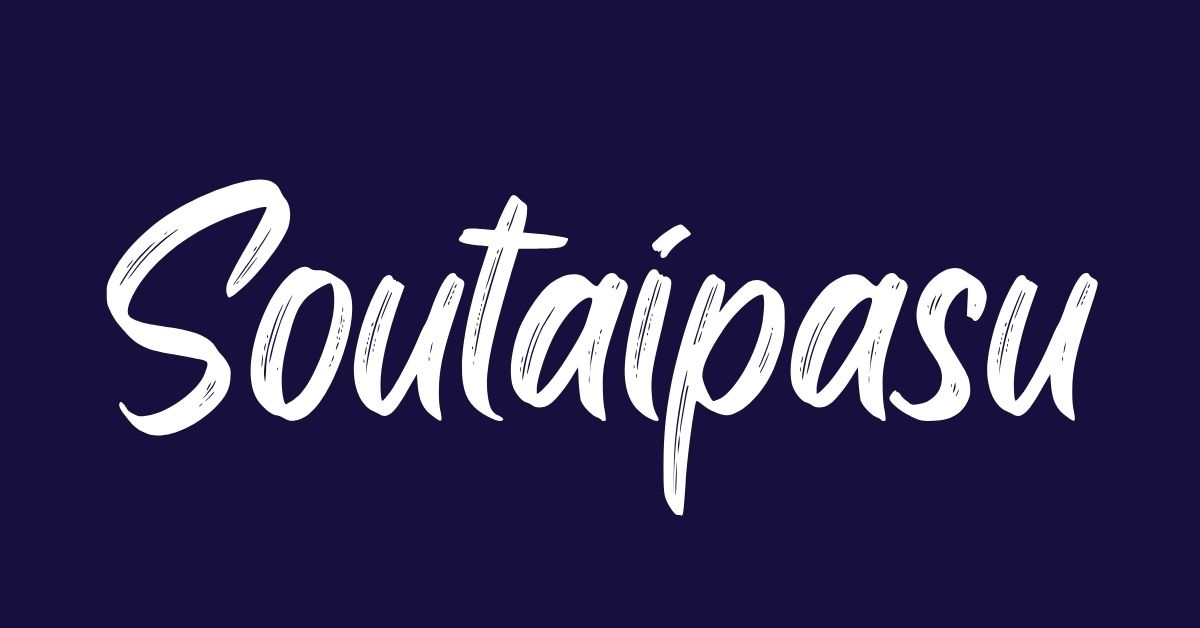
Soutaipasu: Understanding the Idea of Relative Paths
When you work with computers, websites, or any kind of digital project, you will often see the word path. A path is like a map that tells the computer where to find a file or a folder. In Japanese, the word for relative path is soutaipasu (相対パス). This simple idea — “where something is, compared to where you are” — may sound small, but it is one of the most important concepts in technology.
In this article, we will explore soutaipasu step by step. We will look at what it means, how it is different from other paths, why it is useful, common mistakes, best practices, and why it still matters today. By the end, you will understand how soutaipasu helps keep digital projects organized, flexible, and easy to share.
1. What Does Soutaipasu Mean?
The word soutaipasu comes from Japanese. It combines:
- 相対 (sōtai), which means relative or in relation to something else.
- パス (pasu), a borrowed word from English meaning path.
So soutaipasu simply means relative path. It describes the location of a file or folder relative to another file or folder. Instead of saying, “This is exactly where the file lives in the whole system,” soutaipasu says, “This is how you get to the file starting from where you are right now.”
The opposite of soutaipasu is zettai pasu (絶対パス), which means absolute path. That is the full, exact address of a file, starting from the top of the system.
2. Why Do Paths Matter?
Every file in a computer has an address. Imagine a big city full of buildings. Each building has its own address, like “123 Main Street.” If you give the full address, anyone can find it no matter where they are — this is like an absolute path.
But if you are already standing near the building, you don’t need the full address. You might say, “Go two blocks north, then turn right.” That is a relative path, or soutaipasu.
This difference matters because computers need exact directions, and the way we describe those directions affects whether files can be found quickly, whether projects are easy to move, and whether other people can use them without confusion.
3. Absolute Path vs Soutaipasu
To understand soutaipasu fully, let’s compare it with absolute paths.
3.1 Absolute Path
- Always starts from the very top (the “root”) of the system.
- Never changes, no matter where you are in the system.
- Clear and unambiguous, but often long and sometimes hard to move.
3.2 Soutaipasu
- Describes location in relation to where you currently are.
- Can change depending on context.
- Usually shorter and easier to read.
- Very useful when moving a project from one place to another.
Think of it like giving directions in a city. Absolute path is the full mailing address, while soutaipasu is the shortcut directions from where you are standing. Both are correct, but each has its own strengths.
4. Why Use Soutaipasu?
There are several reasons why soutaipasu is so popular and useful.
4.1 Portability
Projects often need to be moved. A website might be copied to another server. A set of files might be given to another person. If you use absolute paths, the links may break because the full addresses no longer match. Soutaipasu avoids this problem because it only cares about the relationship between files.
4.2 Collaboration
When working in a team, different people may store the project in different places on their computers. Absolute paths can break in such cases. Soutaipasu keeps things consistent, so everyone can open and use the files without errors.
4.3 Clean and Simple
Soutaipasu is shorter. Instead of a long, complicated address, you can often write a short path that is easy to read. This makes projects less cluttered and easier to maintain.
4.4 Flexible Deployment
Sometimes a project is placed inside a sub-folder, or under a new environment. Soutaipasu adapts automatically as long as the internal structure of the project stays the same.
4.5 Independence
By using soutaipasu, different parts of a project can be moved or reused more easily. Components or sections are not tied to a fixed location, so they can be flexible and modular.
5. Where Do We Use Soutaipasu?
You will see soutaipasu in many areas of computing:
- Websites – Pages, images, and styles often link to each other using relative paths.
- Documents – In structured projects, one document can refer to another nearby document.
- Software projects – Programs often need to refer to data or other parts of the program in relative ways.
- Collaboration tools – Teams using version control systems (like Git) rely on relative paths so that everyone’s project works no matter where it is saved.
Wherever files need to talk to other files, soutaipasu shows up.
6. The Benefits in Real Life
Imagine you are building a small personal website with three pages: a home page, an about page, and a contact page. All of them use the same picture and the same style. If you write the picture’s location as an absolute path (for example, “C:\Users\YourName\Website\images\photo.jpg”), it will only work on your computer. But if you write it as a relative path (for example, “images/photo.jpg”), it will work anywhere — on another computer, on a server, or even if you move the whole project to a new folder.
This is why soutaipasu makes sharing and publishing so much easier.
7. Common Mistakes with Soutaipasu
Even though soutaipasu is simple, people often make mistakes with it. Some common problems include:
- Wrong starting point – Forgetting where you are starting from, so the path is wrong.
- Too many levels – If folders are deeply nested, the path can become confusing with many “go up” steps.
- Mixing styles – Different systems sometimes use different symbols (for example, slashes). Mixing them can break the path.
- Moving files without updating paths – If you reorganize your folders, you must also update the paths.
- Overusing relative paths in huge projects – In very large projects, soutaipasu can become messy. In those cases, people sometimes use shortcuts or aliases.
The key is to stay organized and always remember the relationship between files.
8. Best Practices for Soutaipasu
To use soutaipasu effectively, here are some helpful guidelines:
- Plan ahead: Design your folder structure before you start linking many files.
- Keep it simple: Avoid unnecessary deep nesting of folders.
- Stay consistent: Use clear and predictable folder names.
- Document your rules: Write down how your project organizes files, so others understand.
- Test often: After moving or renaming, check that all links still work.
- Balance: Use relative paths where they make sense, but don’t be afraid of absolute paths when needed.
These habits save time and prevent mistakes, especially in team projects.
9. Real-World Scenarios
To make the idea clearer, let’s imagine some everyday situations.
- A student project: A student builds a digital portfolio to show work. By using soutaipasu, the project can be uploaded to any school computer or online server without breaking.
- A company website: The website has many pages and shared images. If soutaipasu is used, the whole site can be copied to a new server during upgrades with minimal problems.
- A collaborative app: Several programmers build an app together. Each one saves the project in a different folder on their laptop. With soutaipasu, their references stay consistent when shared on GitHub.
In all these cases, soutaipasu saves effort and makes work smoother.
10. When Not to Use Soutaipasu
There are times when absolute paths are better. For example:
- When linking to an outside website or a shared resource.
- When you need to guarantee the file is always found at the exact same place.
- When the project is very large, and too many relative references become confusing.
So soutaipasu is powerful, but not always the only answer. The best choice depends on the situation.
11. Advanced Considerations
As projects grow more complex, soutaipasu connects with other important ideas:
- Aliases: Some systems let you define shortcuts to avoid long relative paths.
- Dynamic organization: Some projects automatically adjust paths when files move.
- Security: If paths are not handled carefully, attackers might try to trick the system by “going up” into forbidden folders.
Even at advanced levels, soutaipasu remains a foundation.
12. Soutaipasu in Web Development
Because the web is so common, it is worth looking at soutaipasu in this special context.
- Web projects often have many parts: pages, images, styles, scripts.
- Soutaipasu lets these parts link to each other without depending on a fixed server location.
- This makes it easier to move the website to new hosting services, or to work on the project offline before publishing.
For example, a website that is stored in a folder on your computer can be uploaded to the internet, and the links will still work if soutaipasu is used. This is one of the reasons beginners are taught soutaipasu early when learning web design.
13. Soutaipasu Today and Tomorrow
With modern frameworks, cloud services, and advanced tools, some people wonder if soutaipasu is still important. The answer is yes. Even though many tools try to hide or automate paths, the underlying logic is still soutaipasu.
- In modular projects, relative linking keeps components portable.
- In cloud environments, where files may move between systems, relative paths ensure adaptability.
- In education, soutaipasu is one of the first building blocks that helps beginners understand structure and organization.
Far from being outdated, soutaipasu continues to be a core idea behind how we manage and connect digital resources.
14. Key Takeaways
- Soutaipasu means relative path in Japanese.
- It describes where a file is, compared to another file.
- Unlike an absolute path, soutaipasu changes depending on context.
- It is shorter, more flexible, and more portable.
- It is widely used in websites, software projects, and collaborative work.
- Mistakes often happen when people forget the starting point or move files without updating.
- Best practice is to keep folder structures clear, test often, and balance relative with absolute paths.
- Even with modern tools, soutaipasu is still essential.
15. Final Thoughts
At first, soutaipasu may seem like a small detail. But once you understand it, you realize how powerful it is. It allows projects to travel easily, to grow smoothly, and to be shared by many people without confusion.
In a world where digital projects are constantly moving — between laptops, servers, classrooms, and clouds — soutaipasu is like a compass. It doesn’t give the full address, but it always tells you how to get from where you are to where you need to be.



